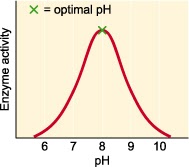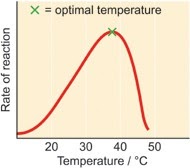Introduction
Core Body Temperature and Blood pH
Blood Glucose
Concentration
Negative Feedback
Positive Feedback
Introduction
The internal environment of our bodies is constantly kept within strict limits. Take for example temperature. It must be a challenge keeping our fleshy selves at 37°C while the outside fluctuates wildly! Or how about blood glucose concentration? We’ve all heard of diabetes – if it goes too high our organs sustain damage, if it goes too low a coma may be induced or even death.
Welcome to homeostasis – the maintenance of physiological parameters within optimal range.
Core Body temperature and Blood pH
Why, though, is it so important to keep a strict temperature and pH? From a physiological viewpoint, think of enzyme activity. Its sensitivity to both temperature and pH means that the only conditions of optimal function will be strictly defined. Lots of enzymes denature past 40°C and are inactivated below 35°C.
Similarly, extreme pH is detrimental to optimal enzyme function, so blood pH must be tightly regulated.


Blood Glucose Concentration
The effects of suboptimal blood glucose concentration are twofold:
